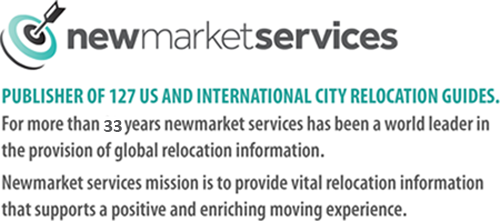Indiana Historical Society
Established in 1830, the Indiana Historical Society is an independent, non-profit organization that serves to collect, preserve and interpret Indiana history. These Indiana treasures are housed at the Indiana Historical Society’s 165,000-square-foot, four-story building in downtown Indianapolis. This $35.75 million state-of-the-art facility, which is located along the historic Central Canal, opened its doors to the Indianapolis community in July 1999. The Society’s headquarters, inspired by Renaissance architecture, is a neoclassical design that showcases superior craftsmanship and detail. In addition to granite and brick, Indiana limestone is one of the primary materials used in the exterior structure.
There are numerous attractions and programs at the Indiana Historical Society that invite visitors to re-live moments from Indiana’s rich past. The Society boasts an acoustically balanced theater, exhibition gallery and Great Hall to host interactive exhibits, concerts, plays, workshops and special events. Visitors can listen to the sounds of Hoosier composers and musicians from a Wurlitzer reproduction jukebox or browse through the Society’s library collection of photographs, pamphlets, maps, paintings and manuscripts.
With their commitment to preserve Indiana history through youth and family programming, the publication of books and periodicals, research grants and education, the Indiana Historical Society has successfully promoted their identity as one of the premier statewide historical organizations.
Conner Prairie
In a review of seven living-history museums including Colonial Williamsburg, Conner Prairie was the only museum which received U.S. News & World Report’s highest rating in both authenticity and entertainment. Each year, more than 320,000 people visit the frontier village where the past becomes the present, and the year is always 1836. Buildings, furnishings, costumes and even the actors’ speech and conversation are thoroughly researched and recreated. Visitors experience many authentic frontier activities, including a camp meeting, a wedding celebration and the process of preserving a hog—from butcherin’ to stuffin’ to smokin’.
A $4 million renovation is part of a five-year improvement plan designed to make this nationally-recognized living history museum more visitor-friendly and interactive. The museum center features a new entrance and Great Hall, a 5,000 square-foot visitor orientation exhibit, a new schedule of indoor exhibits, a multi-media theater, a revamped museum shop and new dining options.
Freetown Village
Freetown Village, a living history exhibit, is housed at the Indiana State Museum. Freetown Village brings to life the post Civil War era of African Americans in Indiana through first-person interpretation and portrayal. The characters of Freetown are historical composites of the nearly 3,000 African Americans who lived in Indianapolis in 1870.
President Benjamin Harrison Home and Old Northside
Built in 1875, this National Historic Landmark was the home of America’s 23rd president. The 16-room Italianate mansion, from which Harrison campaigned in 1888, has been carefully restored to its late 1800s appearance with original Victorian furnishings and political mementos. Special programs and workshops are available throughout the year.
The Harrison Home is located in the Old Northside neighborhood, which was added to the National Register of Historic Places in 1978. The 190-acre neighborhood features Victorian architecture in restored Queen Anne, Free Classic and Italianate residences.
Morris-Butler House Museum
Morris-Butler House, a museum property of Historic Landmarks Foundation of Indiana, is a beautifully restored 1865 Second Empire-style home filled with rare furnishings and elegant decorations reflecting the lifestyle of an upper-class Indianapolis family. Themed events and guided tours of the museum emphasize Victorian-era architecture, home decoration and 19th century history. Morris-Butler House is located in downtown’s historic Old Northside neighborhood and is listed in the National Register of Historic Places.
James Whitcomb Riley Home
This 1872 home, a National Historic Landmark, is considered by historical experts to be one of the most perfectly preserved Victorian houses in the U.S. It was here that Hoosier poet James Whitcomb Riley spent the last 23 years of his life.
The Riley Museum home remains a cornerstone in Lockerbie Square, a historic 19th-century downtown residential area. The oldest Indianapolis neighborhood to be included in the National Register of Historic Places as a historic district, Lockerbie was a frequent topic in Riley’s poetry, in addition to the name of his beloved dog. The neighborhood’s old-fashioned street lights, cobblestone streets and elegant homes take visitors back to society life at the turn of the 20th-century.
Crown Hill Cemetery
Crown Hill Cemetery, just north of downtown Indianapolis, was established in 1863. This historic cemetery is the third largest cemetery in the United States and one of the largest natural areas in Marion County. Notable burials and memorials include President
Benjamin Harrison, three Vice Presidents, Hoosier poet James Whitcomb Riley and the infamous bank robber, John Dillinger. Hook’s American Drugstore and Pharmacy Museum The museum consists of a rare set of restored 1850 drug store furnishings and an operating soda fountain. One of the nation’s largest collections of drugstore nostalgia and artifacts is on display.
In 2001, the museum implemented its first ever series of educational programs for elementary school age children. Currently, the museum is offering a wide variety of educational outreach programs for schools, day care, retirement communities and other public groups.
[insert_php]
$market = “IND” ;
global $market ;
[/insert_php]
[insert_php]
$market = “IND” ;
[/insert_php]
